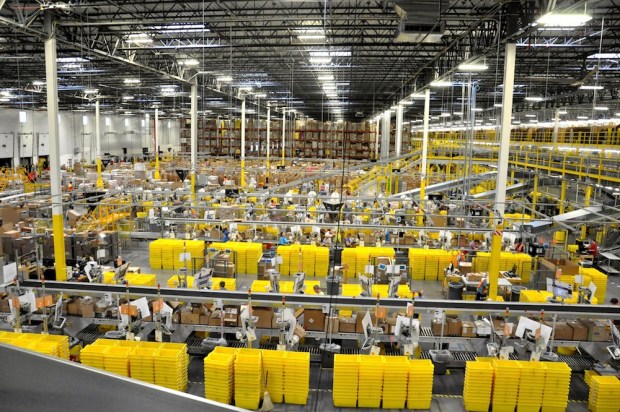Direct To Consumer: Brick-And-Mortar Stores As Warehouses

E-Commerce is having a big moment in retail.
It’s causing retailers to do something that hasn’t been done in years — think outside the big box.
For years, the retail industry was mildly complex but overall ran like a well-oiled machine. Order inventory, market products and prices, sell items to consumers and repeat. With the introduction of eCommerce approximately 20 years ago, all of this started to shift into the unknown. Ever since, traditional brick-and-mortar-based retailers have been struggling to keep up and optimize their operations.
First, retailers added websites to list their products. As eCommerce giants like Amazon came into virtual power, simply having a website became passé. Consumers needed and demanded more of the average retailer.
While many retailers have lately been installing tablets in their stores and developing mobile apps for consumer use, one company is leading the pack with its new approach. To help ensure consumers have access to items as quickly as possible, Kohl’s is altering its brick-and-mortar operations to fit in with the new Amazon-era delivery speed.
As we reported last week, Kohl’s CEO, Kevin Mansell, told of the stores’ thriving performance while sharing news about the company’s decision to use its brick-and-mortar establishments as fulfillment distribution centers. With its $2 billion investment in technology and $1 billion in in-store improvements, it appears that Kohl’s is upping its eCommerce game.
Kohl’s is not the first retailer to fulfill online orders through brick-and-mortar locations. Earlier this year, Target CEO Brian Cornell spoke at the Shoptalk 2017 conference and shared that since the company turned its fulfillment center into an eCommerce center, its brick-and-mortar locations have become a source of digital strength. Now, an astounding 55 percent of its online orders are fulfilled by local stores, rather than utilizing a large warehouse that’s far away.
MIT’s Director of the Center for Transportation & Logistics, Yossi Sheffi, however, argues against this in his WSJ op-ed. He said, “In-store fulfillment moves retailers in the opposite direction by creating work for store employees that used to be performed by customers. It disrupts work flows at stores and adds new, inefficient tasks in sites ill-designed for the new duties.”
Cornell says he has a solution for the supposed ill-designed sites. He shared his plans to redesign 40 of Target’s stores to better capture the needs of today’s omnichannel consumer.
In a sense, retailers using brick-and-mortar locations as a home base for warehouses rather than far away spaces may just be the thing that helps in part to save the demise of physical stores.
This approach may be something to consider for traditional retailers, as Amazon is starting to move further into their turf with its own brick-and-mortar locations.
Amazon’s new bookstores, Amazon Go grocery stores and its recent Whole Foods acquisition news is again changing the game for the retail industry. With merchants in a whirlwind of change, trying to figure out what the next steps are is likely a difficult feat to master.
For now, it appears that the battle is on between eCommerce giants like Amazon and traditional brick-and-mortar stores in the race to find the optimal balance of blending online and in-store arenas.
In direct-to-consumer news this week, high-end fashion store Everlane is opening up its first brick-and-mortar location in San Fransisco’s Mission District.
China-based clothing brand GRANA shared news that it’s expanding its delivery services into 50 new countries.
There’s also talk of Under Armour following in the DTC footsteps of Nike by partnering up with Amazon to sell its athletic gear directly to consumers.
Through all of these moves in retail, one thing is for certain: The industry is undergoing a major revolution. It may be another few years before we see it settle down into a steady rhythm.
